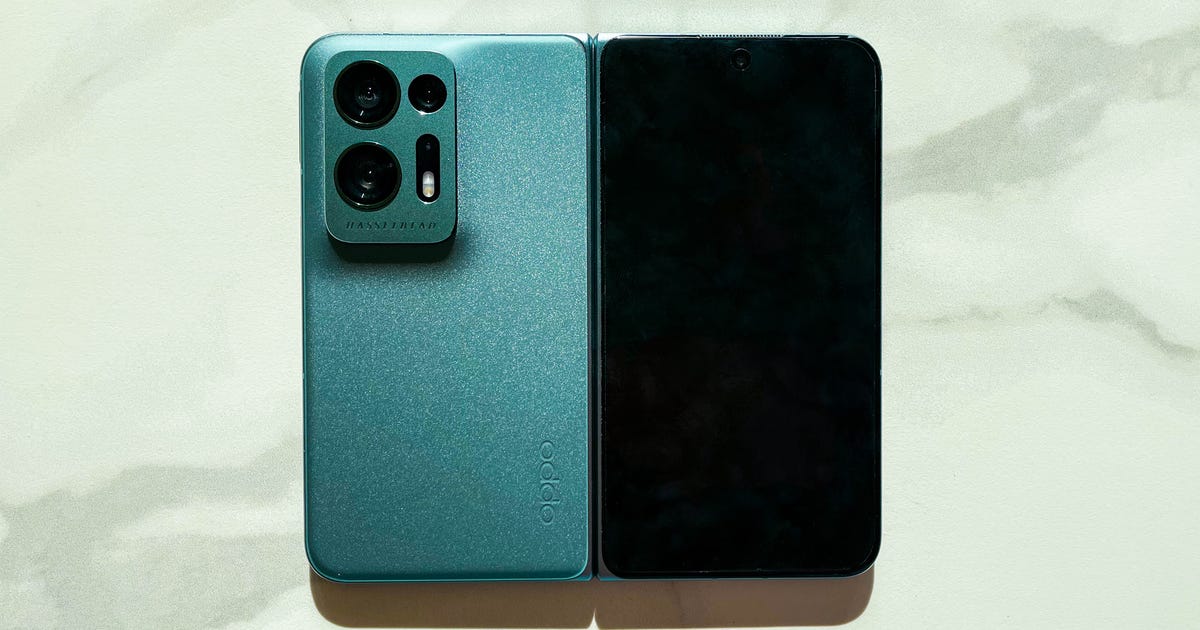Oppo’s New Folding Phone Is the Lightest One I’ve Ever Carried
When I think of foldable phones, I picture a large device that’s too cumbersome to carry around. Oppo’s latest foldable phone, the Find N2, is beginning to change my mind.
The Chinese company’s new phone, announced Wednesday, is the lightest foldable device you can find — even compared to its biggest rival, the Galaxy Z Fold 4. It’s also the shortest foldable I’ve ever used.
Foldable phones seem to be inherently chunky, which is one of their major shortcomings, but Oppo has made impressive progress with the Find N2. It’s 42 grams (42!) lighter than its predecessor, the Find N. Oppo credits its upgraded “Flexion” hinge with helping create a lightweight phone. Oppo says it reduced the number of components required to build the hinge and introduced materials like carbon fiber and a “high-strength alloy” used in the aviation industry.
Apart from its practical size, the Find N2 includes all the trappings of a 2022 foldable flagship. It has a powerful Snapdragon 8 Plus Gen 1 chipset, two equally responsive displays, fast charging and solid cameras. However, there’s no official IP rating for water- and dust-resistance, and you probably won’t be able to buy this phone, even if you’re interested. The Find N2 is currently earmarked for a China-only release. Oppo has also launched a new flip phone, similar to the Galaxy Z Flip 4, however, and it’s expected to receive an international release in the coming months. There was no pricing available for the Find N2 at the time of this writing.
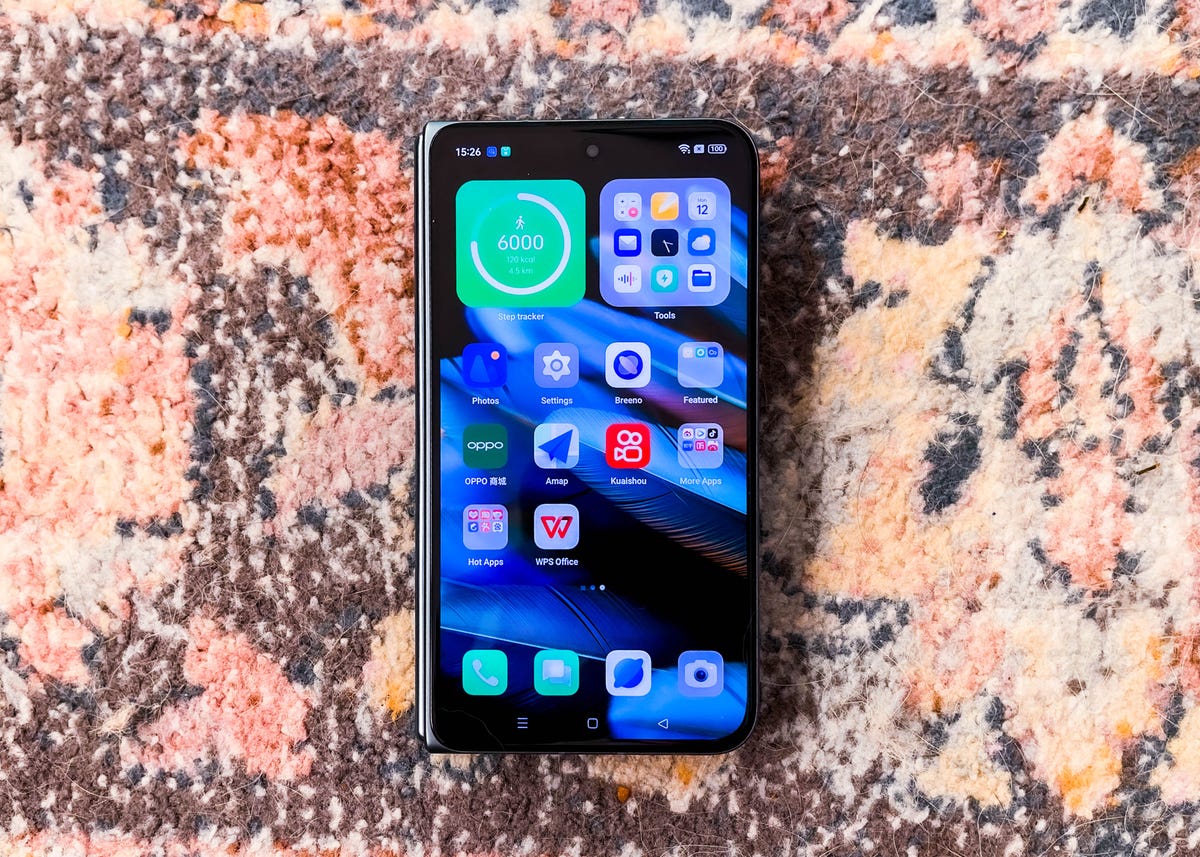
The cover display of the Find N2 has a 120 Hz refresh rate, which is the same as the inner screen.
Sareena Dayaram/CNET
The Find N2 is a shortie
The Find N2’s design is similar to Samsung’s Galaxy Z Fold 4’s in that it’s a book-style foldable phone. However, one key difference is that the Find N2 feels much more compact. The Find N2 is almost 1 inch shorter than the Z Fold 4. Think iPhone 13 Mini in terms of height, but backed with double the thickness. It also has a different aspect ratio of 17.7:9. This means when you unfold the Find N2, it morphs into a squarish screen as opposed to the more rectangular display seen on the Z Fold 4.
The Find N2 is the lightest commercially available foldable phone. At 233 grams, the Find N2 is 30 grams lighter than the Z Fold 4. It also weighs less than the iPhone 14 Pro Max by a few grams. This lightweight design makes it easier to deal with the inherent heft of a foldable phone.
All these qualities make for a more portable foldable phone. I feel more comfortable storing it in my pocket without worrying that it might fall or stick out. This square-like screen also makes the Find N2 stand out from Samsung and Huawei’s competing devices despite the many similarities between these phones.
The Find N2 has a nearly creaseless display
Oppo admits the Find N2’s main display has a crease, but it’s hardly discernible. In my short time with the Find N2, I hardly ever saw or felt the crease. In fact, I needed to maneuver the screen to just that right angle (in a bright room) to see it. While a completely creaseless phone is ideal, the Find N2’s didn’t bother me at all. As for durability, Oppo says the Find N2 has been tested up to 400,000 folds.
The Find N’s inner screen measures 7.1 inches and offers a 120Hz refresh rate Meanwhile, the Galaxy Z Fold 4 has a 7.6-inch inner display. The Find N2 also has a 5.5-inch AMOLED outer screen, which might feel short if you’re used to taller phones.
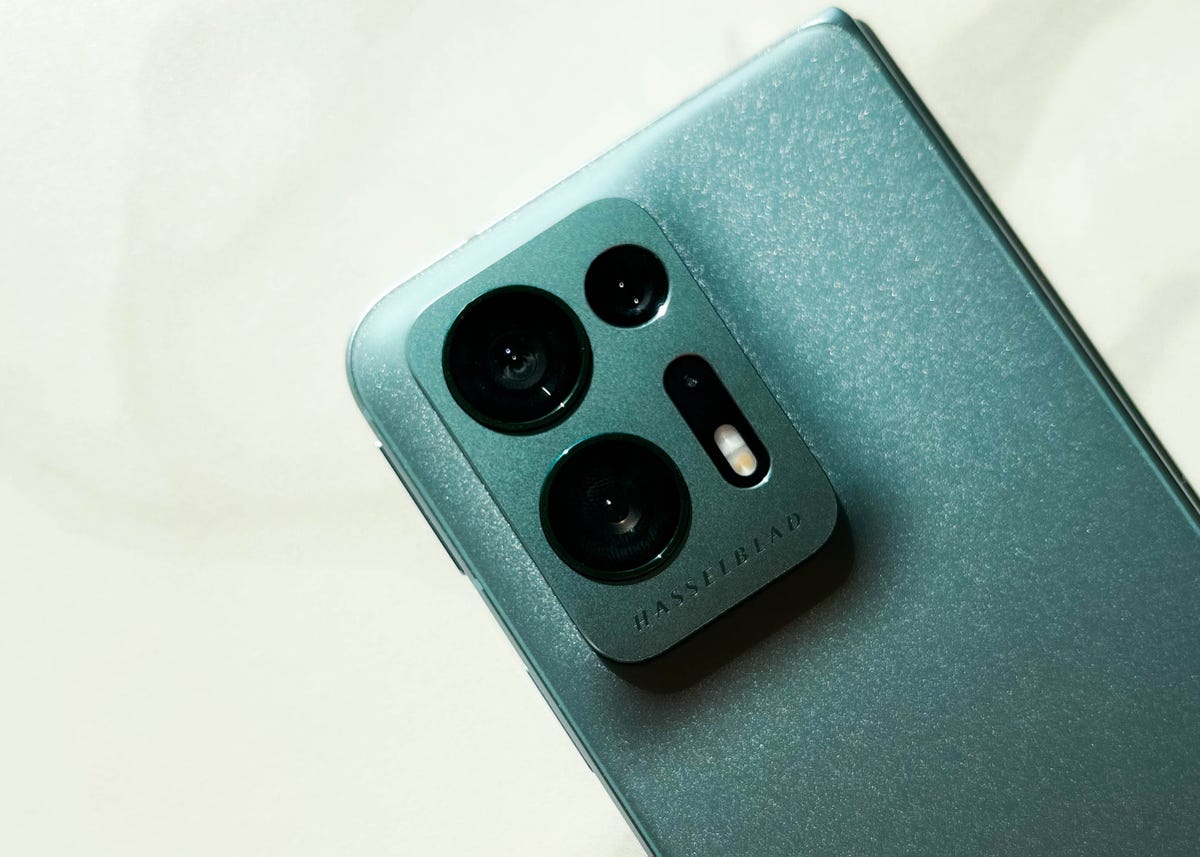
Sareena Dayaram/CNET
The Find N2 has a triple-lens rear camera
The Find N2 has a polished Hasselblad-branded camera module. There are three rear cameras: a 50-megapixel main camera, a 48-megapixel ultrawide and a 32-megapixel telephoto lens. In general, the Find N2 took impressively bright photos even in low-light environments. It was also great to have a telephoto camera capable of a 2x optical zoom, which is 1x less than the Z Fold. There is also support for 10-bit RAW and full manual control with Hasselblad interface elements.
Like its foldable rival from Samsung, the Find N2 has an amusing feature that lets you use the cover screen as a viewfinder for taking selfies with the rear camera. That’s a big deal because front-facing cameras are usually lower quality than the main cameras on the back of the phone.
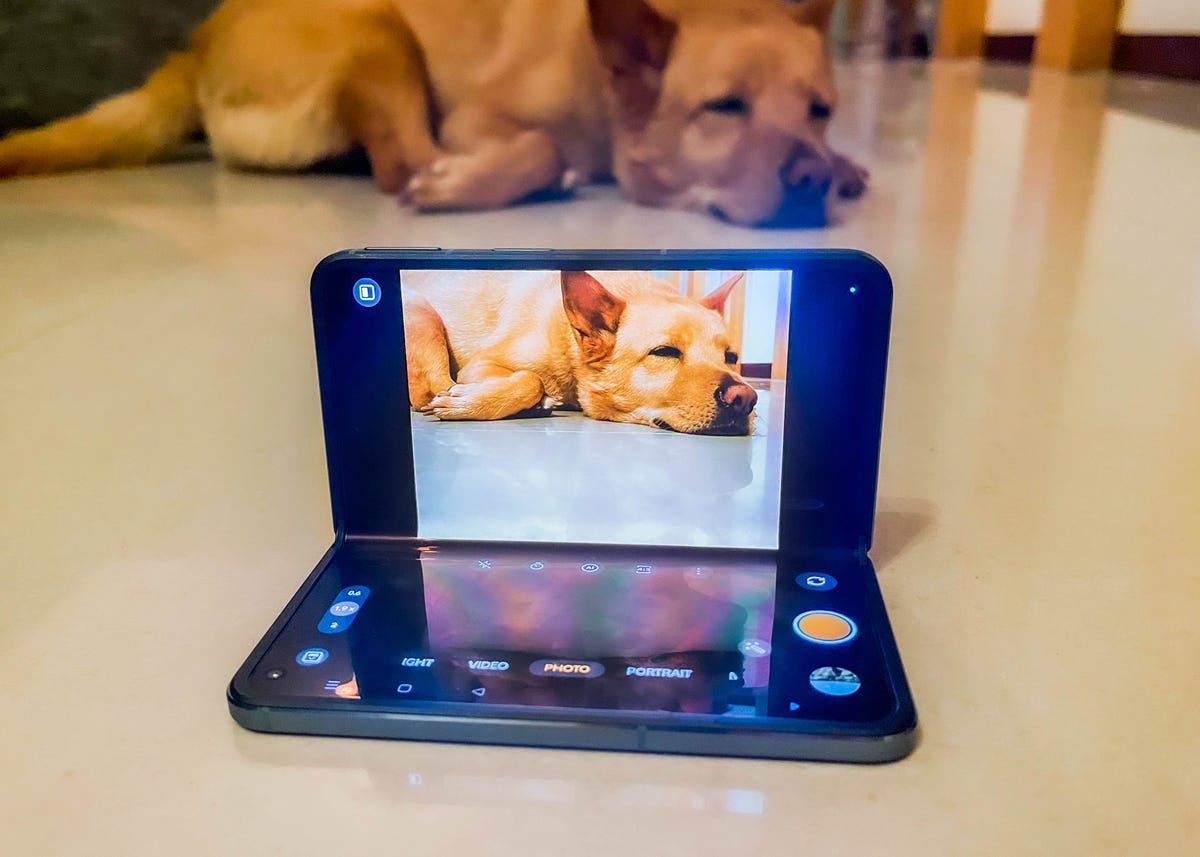
FlexForm mode in action on the camera app.
Sareena Dayaram/CNET
Oppo’s Find N2 also has a feature called FlexForm Mode, which moves the app you’re using to the top of the screen while displaying the controls at the bottom when the phone is half open. This allows you to place the camera on a surface — say a table — and capture a subject from a top-down angle. In my case, I used it to take pictures of my dog sleeping on the floor and ended up getting some cool images from a lower angle. I wouldn’t have been able to capture that shot as easily with a regular, non-folding phone. Samsung’s foldable phones also have a similar software option called Flex Mode.
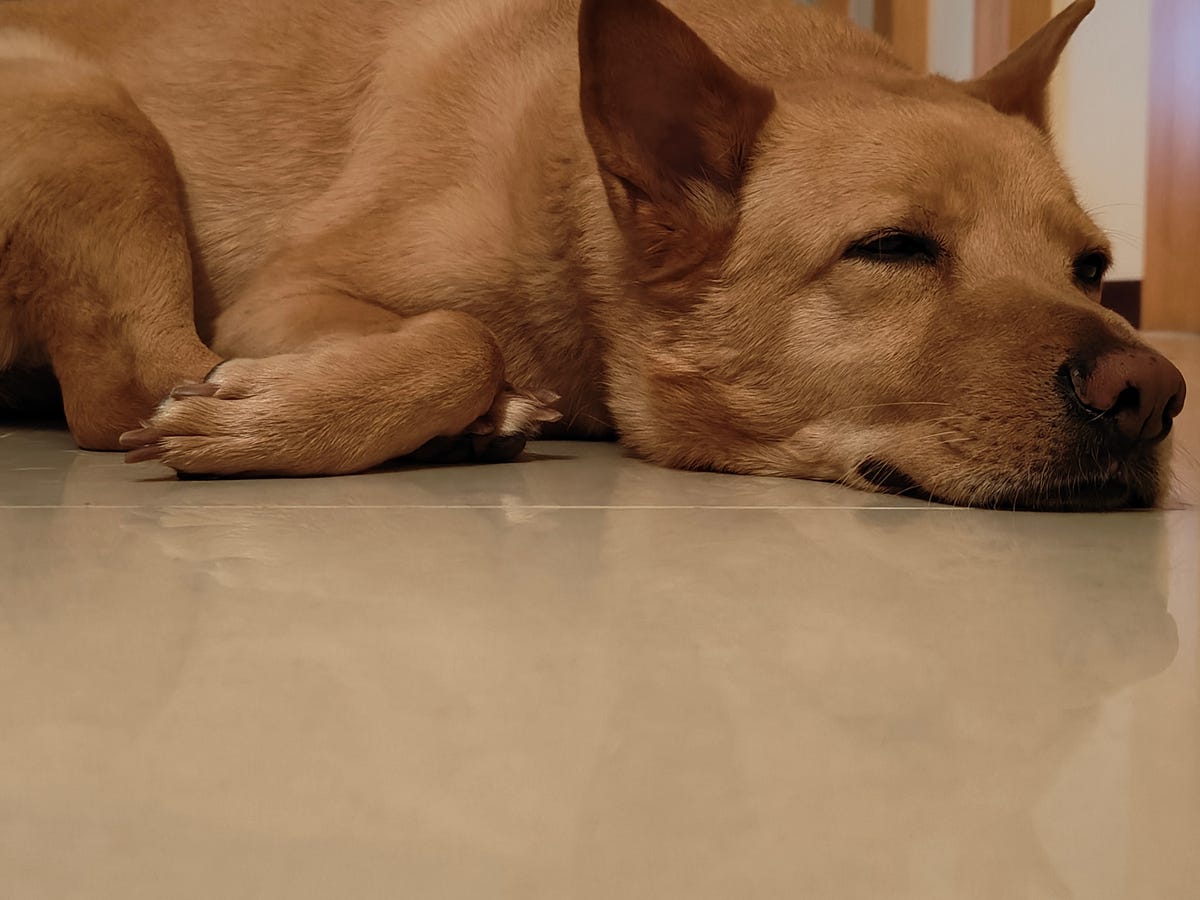
Taken using FlexForm mode.
Sareena Dayaram/CNET

Taken indoors with sunlight pouring through the window.
Sareena Dayaram/CNET
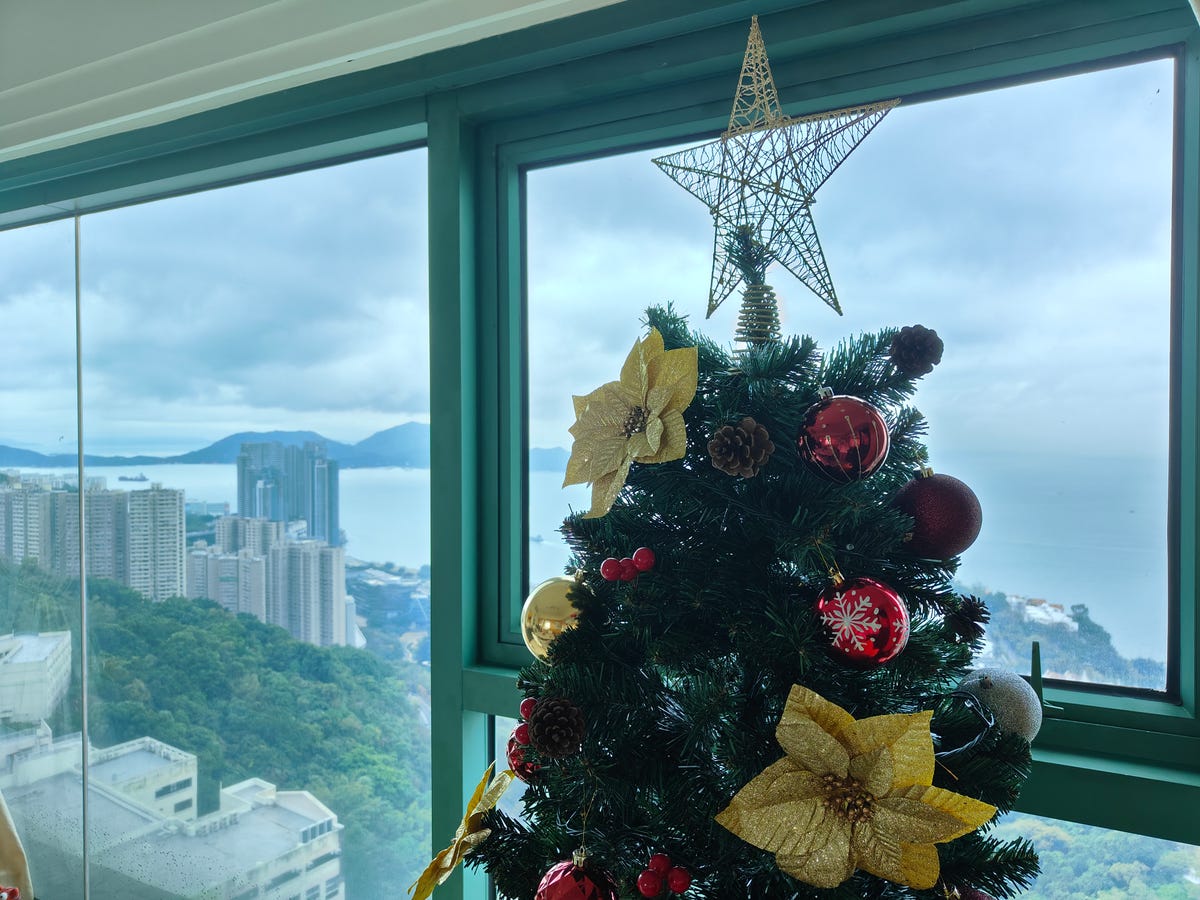
This is a tricky environment for the camera since there is bright light just behind the subject. The Christmas tree looks darker than it actually is in real life.
Sareena Dayaram/CNET
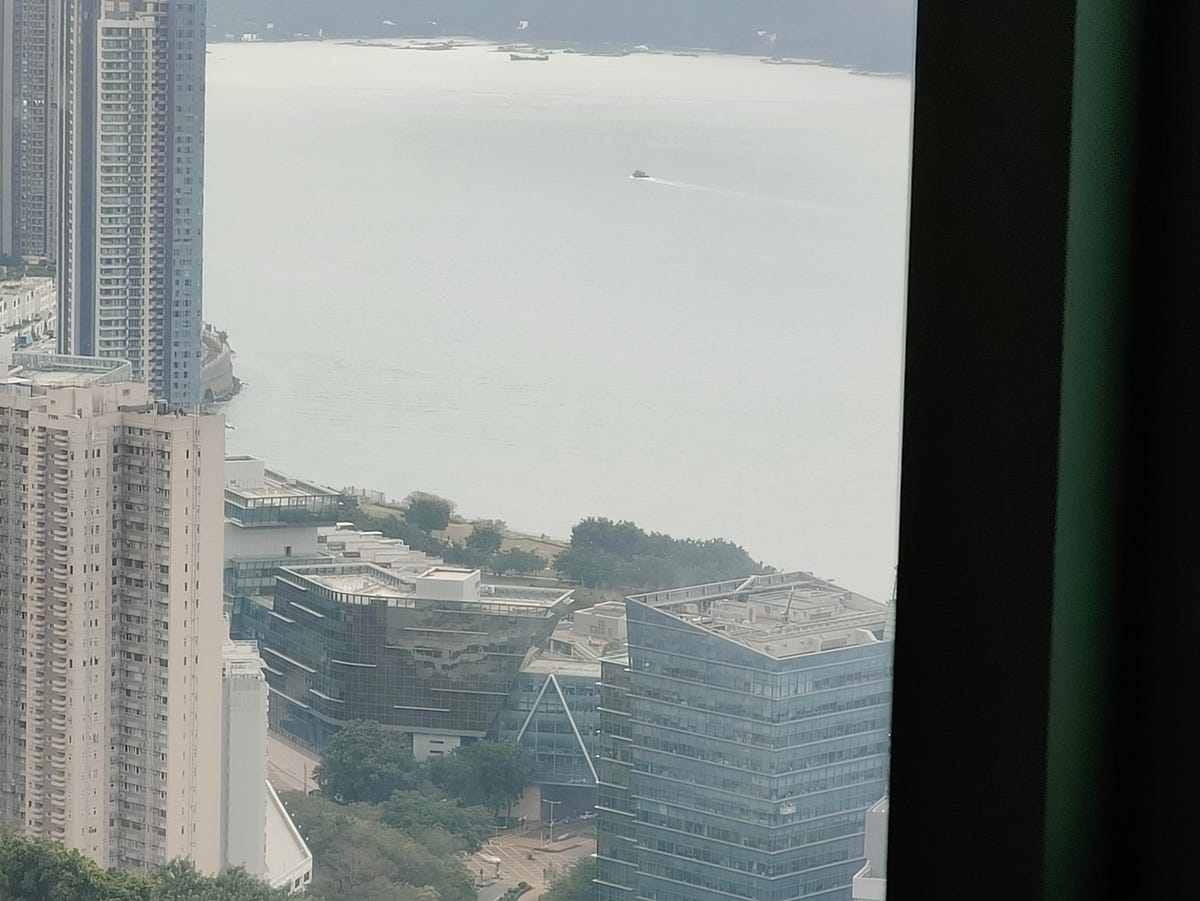
Zooming in past the Christmas tree, past the windows and into the outside environment.
Sareena Dayaram/CNET

20x zoom example.
Sareena Dayaram/CNET
I haven’t thoroughly tested the Find N2, but Oppo’s second foldable phone impressed me during the short time I spent with it. The Find N2 has a refreshingly compact design for a foldable, two sharp screens, dependable cameras, and fast charging. With its shorter design, the Find N2 proves it’s possible to design a phone with a tablet-sized screen that’s still portable. The squarish shape also differentiates the Find N2 from its main Android rival, the Galaxy Z Fold 4. It’s a shame the Find N2 will only be available in China — at least for now.
Oppo foldables vs. Samsung foldables
| Galaxy Z Fold 3 5G | Oppo Find N (China launch only) | Oppo Find N 2 | Galaxy Z Fold 4 5G | |
|---|---|---|---|---|
| Display size, resolution | External: 6.2-inch AMOLED (2,268×832 pixels); Internal: 7.6-inch AMOLED (2,208×1,768 pixels) | External: 5.94-inch AMOLED, Internal: 7.1-inch AMOLED | External: 5.54-inch AMOLED (2,120 x 1,080 pixels) 120 Hz Internal: 7.1-inch (1,792 x 1920 pixels) 120Hz | Internal: 7.6-inch AMOLED (2176 x 1812 pixels) External: 6.2-inch HD+ (2,316 x 904) |
| Dimensions (Millimeters) | Folded: 67x158x16mm (hinge) ~14.4mm (sagging); unfolded: 128x158x6.4mm | Unfolded: 132.6 x 140.2 x 8.0 mm | Folded: 132.2mm x 72.6mm x 14.6mm Unfolded: 132.2mm x 140.5mm x 7.4mm | Folded: 67.1 mm x 155.1 mm x 15.8mm(Hinge) ~ 14.2mm(Sagging); Unfolded: 130.1 x 155.1 x 6.3mm |
| Weight (Ounces, Grams) | 271 grams | 275 grams | 233 grams (black) 237 grams (green, white) | 263 grams |
| Mobile software (at launch) | Android 11 | Android 11 | Android 13 | Android 12L |
| Camera | 12-megapixel (ultrawide), 12-megapixel (wide), 12-megapixel (telephoto) | 50-megapixel (main), 16-megapixel (ultra-wide), 13-megapixel (telephoto) | 50-megapixel (main), 48-megapixel (ultrawide), 32-megapixel (telephoto) | 50-megapixel (main), 12-megapixel (ultra-wide), 10-megapixel (telephoto) |
| Front-facing camera | 4-megapixel (under display), 10-megapixel (front cover) | 32-megapixel (exterior), 32-megapixel (interior) | 32-megapixel | 4-megapixel (under display), 10-megapixel (front cover) |
| Video capture | 4K | 4K | 4K | 4K |
| Processor | Qualcomm Snapdragon 888 | Qualcomm Snapdragon 888 | Qualcomm Snapdragon 8 Plus Gen 1 | Qualcomm Snapdragon 8 Gen Plus 1 |
| Storage | 256GB/512GB | 256GB/512GB | 256GB/ 512GB | 256GB/512GB/1TB |
| RAM | 12GB | 8GB/12GB | 12GB/16GB | 12GB |
| Battery/Charger | 4,400 mAh | 4,500 mAh (4,500 mAh 33W SUPERVOOC 15W AIRVOOC 10W Reverse Wireless Charging) | 4,520 mAh, 67W fast charger | 4,400 mAh, 25W fast charger |
| Fingerprint sensor | Side | Side | Side | Side |
| Connector | USB-C | USB-C | USB-C | USB-C |
| Headphone jack | No | No | No | No |
| Special features | 5G-enabled; Foldable display, 120Hz refresh rate (front cover and main display), water-resistance, S Pen support | 5G, foldable display, 120Hz | 5G, foldable display, lightest foldable phone (233 grams), 2x optical zoom, 20x digital zoom, splash-proof | Foldable phone, 30x optical, 30x space zoom, IPX8, 25-watt fast-charging (no in-box charger) |
For all the latest world News Click Here

